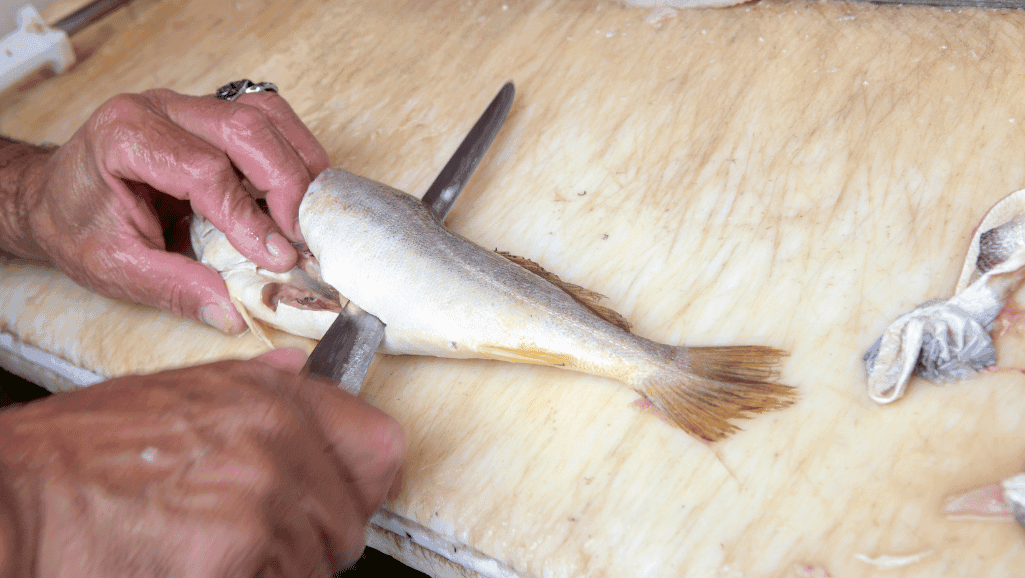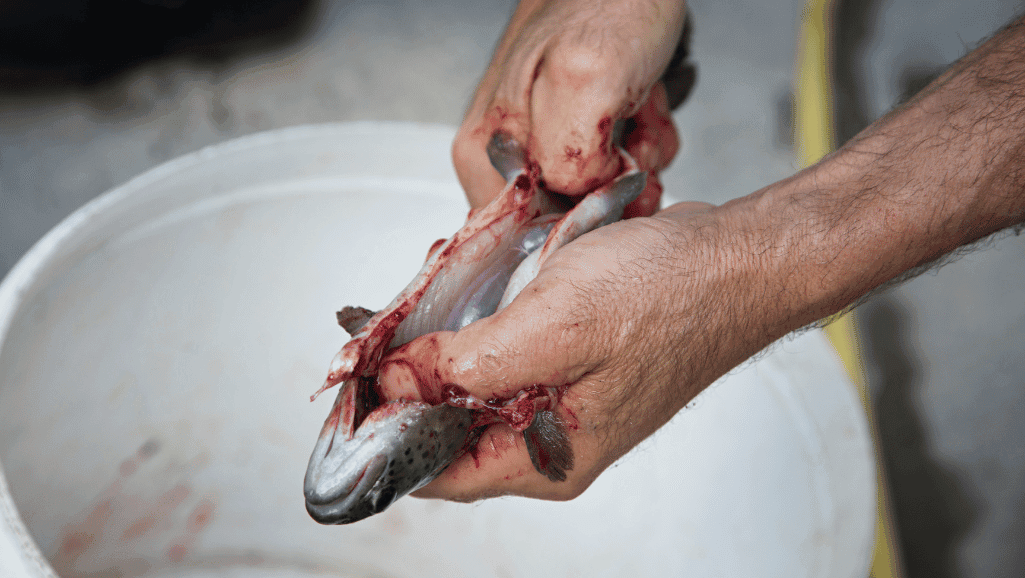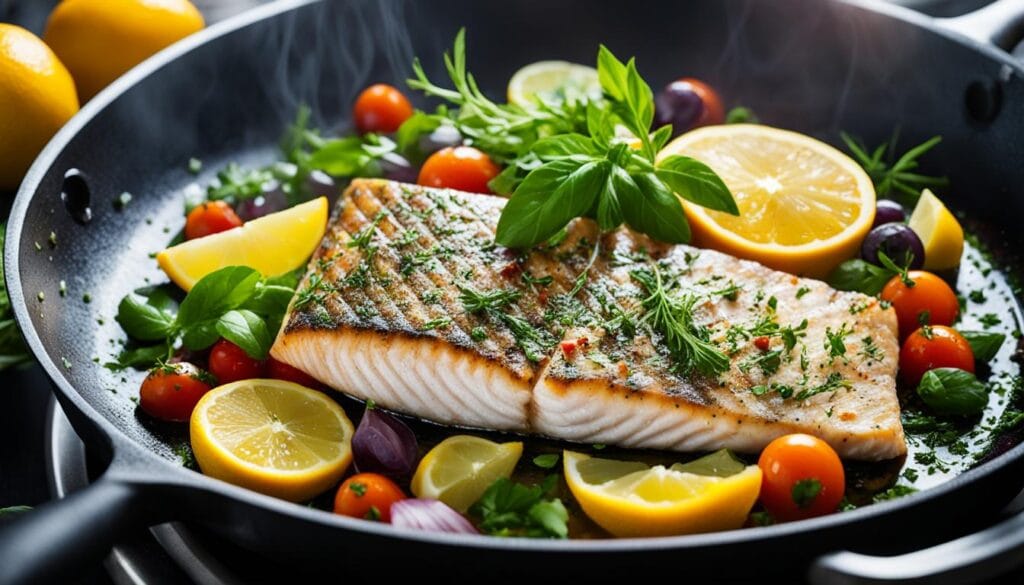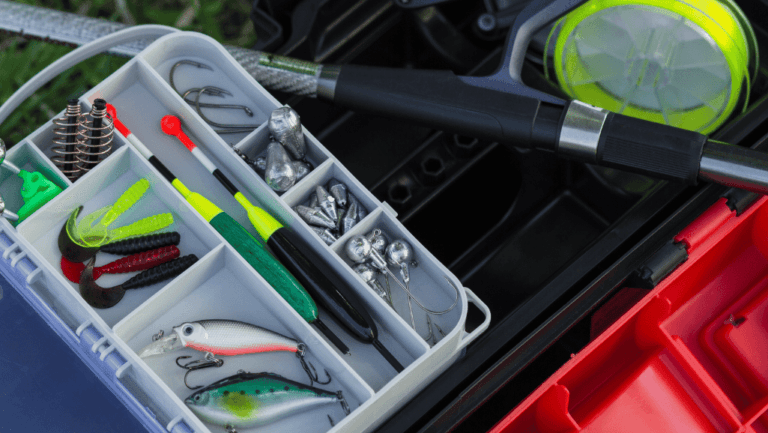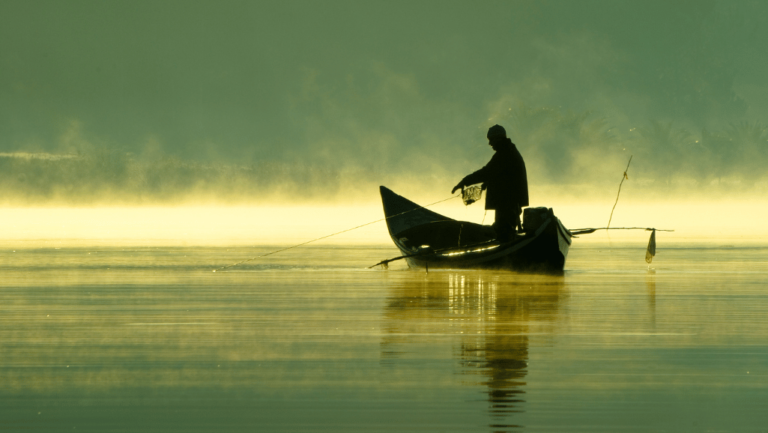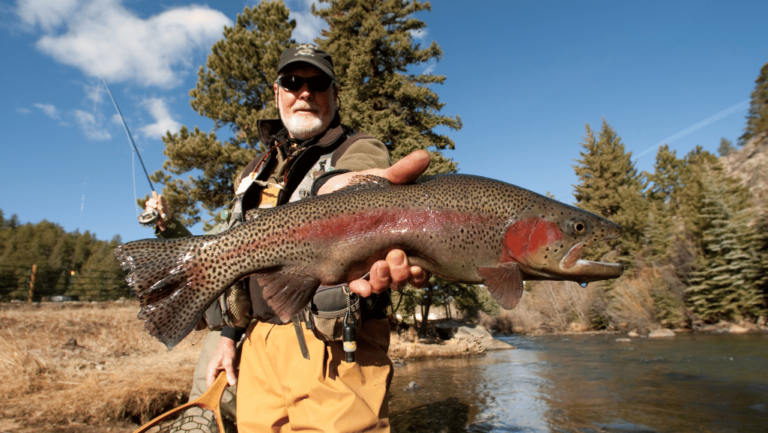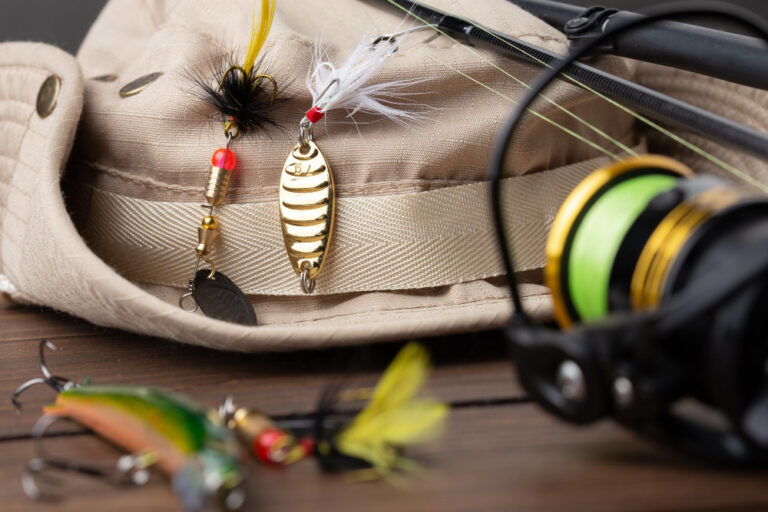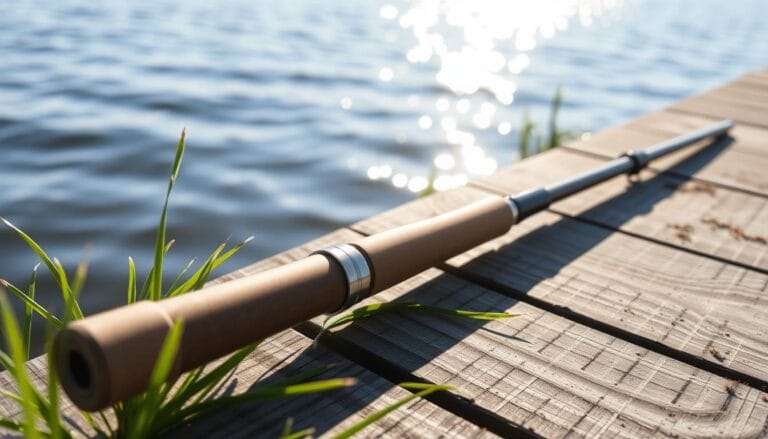Welcome to our step-by-step fish cleaning guide. It’s perfect for both new and experienced anglers. We’ll show you how to make a fresh catch into a tasty meal. You’ll learn from start to finish how to clean a fish for cooking.
Learning the right way to clean fish can be tricky, especially for beginners. But don’t worry, we’ve got you covered. Our guide will teach you the best methods to keep your fish fresh and delicious. You’ll discover how to use a sharp fillet knife and how to gut and scale your catch safely.
With our fish cleaning tutorial, you can clean fish at home, on the dock, or on your boat. We’ll make sure you know everything you need to make your seafood dishes safe and delicious.
Key Takeaways
- Freshly caught fish should be bled out to enhance taste and extend freshness.
- Gutted fish remain edible longer than ungutted ones, as internal bacteria accelerates spoilage.
- A sharp fillet knife and kitchen shears are indispensable tools for an effective cleaning process.
- The suitable method for cleaning a fish depends on its species and size, requiring tailored techniques.
Detailed cleaning optimizes taste and is crucial for health, preventing foodborne illnesses.
- Efficient cleaning and proper disposal of fish remains are key to an environmentally responsible practice.
- Consulting resources such as state agencies ensures safe consumption regarding concerns such as mercury content.
Importance of Cleaning Fish Correctly
Cleaning fish is more than just a simple step. It’s a key part of fish preparation methods that greatly affects safety, taste, and quality. By using professional fish cleaning methods, you make sure the seafood you eat is tasty, safe, and looks good.
Enhancing Flavor and Texture
A good fish cleaning process boosts the fish’s flavor and texture. It removes organs and blood to stop spoilage and keep the natural taste and tenderness. This is vital for making great dishes, whether grilling, baking, or frying.
Preventing Foodborne Illnesses
Cleaning and gutting fish well is key to removing harmful bacteria and contaminants. This is especially important for raw or lightly cooked fish. It keeps you safe from foodborne illnesses.
Maintaining Freshness and Quality
The speed and quality of the fish cleaning process affect how fresh the seafood stays. Fish starts to spoil quickly after leaving the water. Quick and effective cleaning stops decay, keeps quality high, and keeps nutrients fresh longer.
NC Seafood, known for its top seafood hygiene, stresses the need for fast and professional fish cleaning. This ensures the fish served is the best quality.
| Benefit | Detail |
|---|---|
| Flavor and Texture Improvement | Removing internal organs and contaminants that can ruin the taste and texture of fish. |
| Reduction of Health Risks | Getting rid of microorganisms and toxins that can cause foodborne illnesses. |
| Freshness Preservation | Quick cleaning stops enzymatic breakdown and bacterial growth, keeping fish quality. |
Essential Fish Cleaning Equipment
Having the right fish cleaning equipment is key for a safe and efficient way to prepare your catch. From gutting to scaling, you’ll need specific fish cleaning tools to make the process easier and safer.
The Right Tools for the Job
For safe and quality fish, you need specialized tools. A must-have is a sharp fillet knife for precise cuts. The Victorinox 8-inch Flexible Fillet Knife is great for its flexibility and sharpness.
For bigger or more frequent jobs, the Berkley Deluxe Electric Fillet Knife is a big help. It makes the work easier and faster.
Scaling and gutting tools are also crucial. The Rapala Marttiini Salmon Rosewood Fillet Knife is excellent for these tasks. It has a strong and precise blade. Pliers and tweezers are also important for removing bones, so you can enjoy your meal without hassle.
The Williamson Slim Fillet Knife is great for delicate cuts. It’s perfect for fish cleaning. To keep your knives sharp, use the Diamond Sharpening Steel.
Setting Up Your Cleaning Station
A well-organized cleaning station is vital for fish preparation. It should have a strong cutting board, containers for waste, and protective coverings like newspapers or disposable sheets.
Using these fish preparation tips and tools makes cleaning more enjoyable and efficient. It also improves the quality and safety of your fish dishes. Remember, choosing the right bait is as important as having the right tools.
Properly cleaning your catch is crucial to avoid spoilage, bad taste, or foodborne illnesses. With the right fish cleaning equipment, you can ensure a great fish meal.
How To Clean A Fish: Preparation Phase
Getting ready is crucial for cleaning fish at home. First, set up a good workspace. Many people forget the learning curve of fish cleaning. This guide helps beginners and experts prepare safely and hygienically.
Begin by picking a spot for cleaning. Use a strong table in a bright area if you don’t have a special station. Cover it with old newspapers to make cleanup easy. Make sure your fish is on a non-slip surface to avoid accidents.
Start with a careful cut near the anal fin and go up towards the head. This way, you avoid damaging the intestines. It makes the fish cleaner and the process smoother, as per the fish cleaning guide.
Let’s look at why fish cleaning stations are good and how to use them well:
| Benefits | Best Practices |
|---|---|
| On-site convenience and simplified cleaning process | Regular use of bleach solution for disinfection |
| Cost-effectiveness by reducing the need for pre-cleaned fish purchases | Maintain tools in functional condition to ensure longevity |
| Increased hygiene and food safety | Implement routine post-use cleaning to deter pests and bacteria |
| Sustains seafood freshness and taste | Position the station in a sheltered location to safeguard from environmental factors |
This method makes cleaning fish easier and keeps the fish fresh and safe. It also improves your skills in handling seafood. Preparing well is key to a great experience.
Every detail in preparation affects your fish’s quality. Whether it’s a simple dinner or a big event, knowing how to clean fish at home makes your meals special. It shows you care about the food you eat.
Step-by-Step Guide for Gutting a Fish
Learning how to gut a fish is key for fishermen and cooking lovers. This guide will help you gut your fish safely and with confidence. It covers everything you need to know to prepare your fish well.
First, make sure the fish is dead before you start. Use a sharp, clean knife to cut from the vent to the head. This cut should be close to the belly to avoid damaging the intestines, which can spoil the meat.
Next, open the fish to see the inside. Use your hands or a spoon to take out all the organs. Put these in a container for disposal to keep your work area clean. For fish like trout from places like the Uinta mountains, removing the bloodline and cleaning well makes them taste better.
Don’t forget to cut around the anus to remove any last entrails. This ‘V’ cut is important for getting rid of all waste, which can ruin the taste if left in.
Finally, rinse the fish under cold water to clean off any blood or bits. With the gutting done, your fish is now ready for cooking. You can fry or season it however you like.
Gutting your fish right keeps it fresh and safe to eat. It’s a must-know skill for anyone, whether you catch trout, salmon, or bass. Mastering these techniques is crucial for your cooking success.
Fish Scaling Techniques and Best Practices
Learning fish scaling techniques is key for anyone wanting to cook fish right. It’s not just about looks; it also affects the fish’s texture and taste. Knowing how to use a fish scaler tool well can make cooking easier and cleaner.
Choosing the Right Scaling Tool
The Paderno World Cuisine Fish Scaler is a great choice for a fish scaler tool. It has a strong stainless steel blade and handle. This makes it perfect for fish like black bass, striped bass, and bluegills, which have big scales.
Pro Tip for Seamless Scales Removal
If you don’t have a special scaler, a sharp kitchen knife or spoon works too. Make sure the blade is sharp and scrape from tail to head. This avoids tearing the skin. Always wear an apron and rubber gloves to protect against sharp scales.
After scaling, rinse the fish well. This step is important for a best way to clean fish. It removes scales and dirt, making the fish clean for cooking. You can now fillet, leave whole, or cut into steaks.
Final Touches Before Cooking
After making sure the fish is gutted and the cavity is clean, it’s time for the final touches. These steps improve both the look and taste of the fish. This part of our fish preparation guide shows how to get the fish ready for cooking. Knowing the best way to fillet a fish is key for a great look and taste.
Removing dark tissue from the belly is a key step. This tissue can make the fish taste bad if left on. Use a sharp knife to carefully remove it, making sure not to hurt the fish. Good fish filleting techniques help keep the fillet whole and looking good.
Check the fish for any scales or bones left behind. You might find scales near the fins and belly, even after scaling. Use tweezers to take them off. Tiny bones can be felt and removed with tweezers for a boneless fillet.
You can decide to keep or remove the head, based on your recipe or how you like it to look. Some recipes use the head for flavor and look, while others prefer a cleaner look without it.
Put the cleaned fish in a dish ready for cooking. If you’re not cooking right away, cover it with cling film and refrigerate to keep it fresh. The fish is now set for seasoning or cooking as your recipe suggests.
By using this guide and learning fish filleting, you make sure your fish is ready for cooking. It also sets it up for the best taste and look in your dish. The effort you put into preparing the fish will show in how it tastes and looks when it’s done.
Cleaning Up Post-Preparation
After cleaning fish for cooking, it’s key to focus on cleaning up. This keeps the kitchen clean and ready for the next meal. You need to sanitize the area and get rid of fish waste properly.
Sanitizing Your Workspace
After cleaning the fish, sanitize all surfaces that touched the fish. Use hot, soapy water to clean. It’s important to keep the area clean to avoid contamination.
Using disinfectants or bleach can make sure your space is safe for other dishes. Don’t forget to clean tools like knives and cutting boards to remove odors and bacteria.
Learning the best practices in fishing and fish cleaning improves taste and health safety. It helps prevent foodborne illnesses.
Proper Disposal Techniques
Properly disposing of fish waste like guts and scales is crucial. Put all waste in a bin with newspaper to soak up fluids and reduce odors. Then, seal the bin and follow local waste rules to avoid pests and smells.
Cleaning fish at home is complete with proper waste disposal. This keeps your kitchen clean and safe.
Following steps from cleaning to disposing of waste makes fish preparation successful at home. A clean kitchen is key for health and safety.
| Activity | Importance |
|---|---|
| Hot soapy wash | Removes bacteria and residue |
| Bleach/Disinfectant use | Ensures a germ-free environment |
| Waste management | Prevents odor and pest problems |
| Equipment cleaning | Maintains tool longevity and effectiveness |
Following these steps makes cooking with fish safe and enjoyable. It shows mastery in kitchen skills.
Additional Tips for Fish Cleaning Success
To make sure your fish dishes are top-notch, follow these fish cleaning tips. From fish preparation tips to fish gutting tips, each step is key for a great meal.
Cleaning fish quickly is crucial for keeping it fresh and safe. Using a sharp knife is not just precise but also safe, lowering injury risks. Also, rinse the fish with cold water to keep its texture right, making your dish better when cooked.
Here’s a closer look at fish preparation tips:
| Preparation Step | Importance | Tip |
|---|---|---|
| Immediate Cleaning | Locks in freshness and safety | Clean immediately after catching for optimum quality. |
| Using a Sharp Knife | Ensures precision and safety | Always sharpen knives before starting the cleaning process. |
| Rinsing with Cold Water | Preserves texture | Rinse thoroughly under cold running water to remove debris and blood. |
| Drying with Paper Towels | Helps achieve a crisp texture when cooked | Gently pat dry the fish with paper towels before cooking. |
- Keep the skin on when filleting if you plan to scale the fish. It keeps the flavor and texture better.
- Freezing fillets in water keeps them fresh and prevents freezer burn. This makes the fish taste great when thawed.
- Use a sharp, thin blade or an electric knife for easy fish cleaning. These tools are preferred for their efficiency.
Apostle Paul wrote powerful letters from prison, showing us the impact of good tools and techniques. Today, we can clean fish with precision and effectiveness, no matter where we are.
Always check local rules on fish and follow them, especially when moving fish products. Following the law is key to keeping your fish preparation safe and credible.
Adding these advanced fish cleaning tips to your routine makes your dishes safer and better. It also supports sustainable and ethical fishing.
Storing Your Cleaned Fish
After cleaning and preparing your fish, it’s key to store it right to keep it fresh and tasty. The way you store freshly cleaned fish depends on if you’ll eat it soon or freeze it.
Keeping It Fresh On Ice
If you want to eat your fish within a few days, here’s how to keep it fresh. As explained in a post-cleaning care discussion, keep the fish on ice. This keeps it just above freezing, slowing down bacteria growth and keeping the fish good for two to three days.
Also, experts suggest a brine dip for lean fish. Dip the fish in a mix of ¼ cup salt to 1 quart cold water for 20 seconds. This makes the fish firmer and reduces drip loss if you freeze it later.
Preparation for Freezing
When freezing fish, first figure out the fish type. Fatty fish like salmon or mackerel need an ascorbic acid solution to keep their flavor and prevent rancidity. They can last two to three months this way. Lean fishes can stay good for up to six months if wrapped well.
It’s also smart to keep ready-to-eat foods separate from raw fish in the freezer. This prevents contamination and keeps food safe and quality high.
| Fish Type | Storage Method | Duration |
|---|---|---|
| Fatty Fish (e.g., Salmon, Mackerel) | Dipped in ascorbic acid, tightly wrapped | 2-3 months |
| Lean Fish (e.g., Cod, Snapper) | Dipped in brine, tightly wrapped | 6 months |
| Smoked Fish | Refrigerated or frozen, separated | 1 week refrigerated |
Whether you keep your fish on ice or freeze it, careful handling is key. These steps help keep the fish fresh and safe, making for a great meal anytime.
Ideas for Cooking Your Freshly Cleaned Fish
Once you’ve learned how to prepare your catch, the fun starts. Cooking freshly cleaned fish lets you create a variety of tasty dishes for any event. Whether you like simple grilling or fancy recipes, we’ll show you how to make your fish taste great.
Seasoning for Flavor Enhancement
Choosing the right seasoning is key before cooking. Fresh herbs like dill, parsley, or cilantro are great with fish. They add a light, fresh taste without taking over the fish’s flavor. For a bit of spice, try marinades or rubs with garlic, lemon, and black pepper. These add flavor and keep the fish moist while it cooks.
Recipe Recommendations
There are many fish cooking ideas out there. Here are a few easy and tasty recipes:
- Grilled Fish Tacos: Season your fish with taco spices, grill it, and serve with corn tortillas and fresh salsa.
- Lemon Butter Baked Cod: Bake cod with butter, lemon juice, and garlic. This dish highlights the fish’s delicate texture.
- Spicy Fish Curry: For bold flavors, try a spicy fish curry with aromatic spices and coconut milk.
The key to a great fish dish is how you prepare and season it. This affects both the texture and taste. Try different herbs and spices to find what works best with your fish.
| Fish Type | Recommended Seasoning | Suggested Cooking Method |
|---|---|---|
| Salmon | Dill, lemon, garlic | Baking or grilling |
| Tilapia | Chili powder, lime | Pan frying |
| Cod | Paprika, parsley | Baking in lemon butter |
Cooking freshly cleaned fish lets you bring out its natural flavors and add your own twist. Whether it’s for a dinner party or a quick meal, these recipes will impress everyone.
Conclusion
Mastering fish cleaning is a skill that interests both expert chefs and kitchen beginners. This guide has covered the key steps and tools needed for fish cleaning success. It showed how to use a sharp knife, scaling tool, and cutting board correctly. It also explained how to gut, scale, and fillet fish safely.
This skill keeps the fish’s flavor delicate and makes it safe to eat. A well-cleaned fish, when cooked carefully, shows the best taste of seafood.
Keeping things clean is also key in fish cleaning. It’s as important as sharpening your knife. Cleaning and throwing away waste properly is just as important as the cleaning itself. This makes the hard work of preparing fish worth it, leading to meals that are fresh and cook quickly.
Experts at places like NC Seafood at the Farmer’s Market in Raleigh have shown this. They cook seafood in almost half the time of poultry.
In short, preparing seafood is very rewarding. By following the steps in this guide, you can make cleaning fish a smooth process. It leads to amazing meals that improve your cooking skills and make dining more enjoyable for everyone.
If you want to get better at it, don’t hesitate to ask seafood experts for more tips. They can help you make your seafood dishes even more delicious and fresh.


